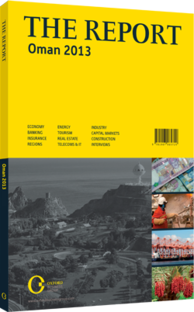Reduce, reuse and recycle: Hydroponics offer a greater return on water inputs
The introduction of new technologies and processes is a key driver of change in all agricultural sectors – and Oman is no exception. In common with most Middle Eastern states, the availability of water has defined the modes and geographical distribution of the sultanate’s agricultural activity, resulting in livestock rearing in the southern Dhofar area of the country and the cultivation of crops in the northern Al Batinah region. Unsurprisingly, agricultural innovation in Oman has often sprung from the timeless conflict between farmers and the climate, such as the ancient falaj irrigation systems, which have created green oases in inhospitable mountain valleys, enabling the cultivation of the nation’s famous date palms, lime and mango trees, as well as more recent government efforts to introduce more modern solutions – such as through the provision of diesel pumps in interior areas.
Water Solution
A shortage of water remains one of the primary challenges facing the agricultural sector. The Directorate of Statistics at the Ministry of Agriculture and Fisheries Wealth (MoAFW) estimates that of a total of around 2.3m ha of arable land, only 70,000 ha is fully utilised due to the limitations of water supply. Turning to modern irrigation systems like diesel pumps is not always the answer: the pumping of more water in wells along the Al Batinah coastline caused a fall in the water table by the mid-1980s and a subsequent encroachment of seawater. Since the 1990s a number of areas have been designated as no-drill zones. For this reason much of the work carried out by the MoAFW’s Directorate of Research has eschewed large-scale irrigation and concentrated on non-irrigation solutions to the water problem, such as the selective cultivation of drought-resistant or salt-tolerant crops. Micro-irrigation, however, has remained a research priority throughout, and recent progress towards the creation of a hydroponic agricultural segment has highlighted the potential of this activity. In 2012 the MoAFW’s announced the successful conclusion of a series of hydroponic trials, and that it will promote the technique to Oman’s farming community. The ministry’s research centre in Salalah is home to a 270-sq-metre hydroponic greenhouse, that has been planted with lettuce and cucumber – crops that cultivate well with technology. Hydroponic agriculture brings a number of benefits: soil issues, such as fungus and salinity, are sidestepped through the use of vermiculite (a hydrated laminar magnesium-aluminium-iron silicate, which resembles mica in appearance), barite or even simple husk as a replacement medium, while closed pumping systems are able to reuse nutrient-filled water for a number of cycles – advantageous in Oman’s more arid regions.
Switching To Hydro
The initial costs of setting up a hydroponic facility are greater than those associated with traditional farming techniques. However, as the ministry is quick to point out, the longer-term benefits easily outweigh them: “The infrastructure cost for 270-sq-metre greenhouse farming is OR3500 ($9120), while the same area in a hydroponic system needs an investment of OR5000 ($13,000). The benefit lies in output. The product difference between hydroponic and greenhouse varies from 3.5-4 tonnes to 2.5 tonnes respectively in the same area,” Basim Bashir Abiudoon, vegetable crop researcher at the MoAFW, told local press in October 2012. Significantly, such start-up costs have not deterred public or private investment in the new technology. In April 2012 Al Hosn Investment, a partnership between Qatar Holding and Oman’s Ministry of Finance, announced the inking of a $26m deal with two Spanish agricultural companies to develop a 12-ha hydroponic greenhouse project in Barka. Both MSC Fabricas Agricolas and Zeta Amaltea have successful histories in soilless agriculture, and their combined effort is expected to result in an eventual production capacity of 3m tonnes per annum while utilising up to 60% less water than traditional methods. Most of the produce is earmarked for export and the project is expected to establish a marketing office in the UAE at an early stage. Should its objectives be met, it will serve as a model for the sultanate’s new hydroponic segment.
You have reached the limit of premium articles you can view for free.
Choose from the options below to purchase print or digital editions of our Reports. You can also purchase a website subscription giving you unlimited access to all of our Reports online for 12 months.
If you have already purchased this Report or have a website subscription, please login to continue.

